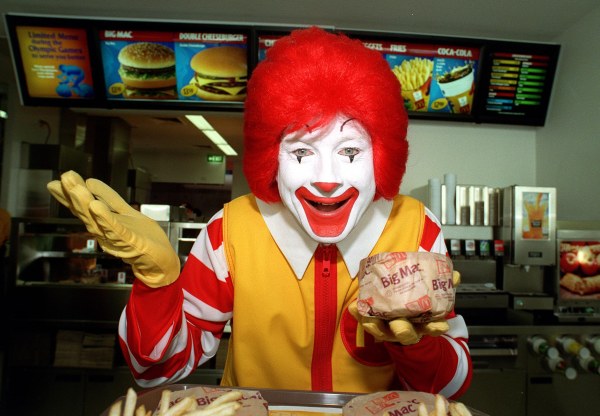
"Why are people having such a hard time taking me seriously?"
More ominous news for Big Mac lovers: This year, for the first time since 1970, McDonald’s is closing more locations in the U.S. than it’s opening. The writing is on the wall — Americans want fast-casual dining and healthy meals, and the Golden Arches just doesn’t fit that bill.
At least, not yet. In the most recent issue of The New Yorker, writer Michael Specter examined McDonalds’ attempts to shift the public’s perception of the brand as fast, cheap, and unhealthy toward being all-natural and sustainable, something consumers love these days.
“Society is shifting in a major direction, so guess what — McDonald’s is going to shift, too,” the company’s executive chef and vice-president of culinary innovation, Dan Coudreaut, told Specter. Some changes the company has already begun to implement: replacing margarine with butter to cook items on the grill, and nixing poultry and dairy products treated with antibiotics.
The problem is that McDonald’s is having trouble getting away from the “unhealthy” brand associations that it’s built up over decades, even with all the changes it’s making. Fries will always be fries, and Big Macs will always be Big Macs — if those are still the keystones of McDonald’s menu, it’s going to be hard to convince the public buy into their health-positive pivot. This is compounded by the fact that the company has gotten caught up in the stunt marketing consuming the fast food industry.
https://twitter.com/Burger_Lad/status/654563100872601600/photo/1?ref_src=twsrc%5Etfw
So what’s a globally iconic brand to do? In his piece, Specter visited two up-and-coming fast-casual restaurants known for their healthy and sustainable business models: Lyfe Kitchen (which was started by two former McDonald’s execs) and Sweetgreen, a fast-food salad outlet. Both restaurants offer pricier food than McDonald’s and benefit from the chance to carve out a new identity in the minds of consumers. That’s not to say that these new companies aren’t eyeing the Golden Arches’ business model.
“I see this place becoming the McDonald’s of the future,” Lyfe Kitchen co-founder Michael Donahue, told Specter. “The good McDonald’s. The healthy, inviting, sustainable McDonald’s.”
The fact is, the changes McDonald’s is trying to make are going to be tough. Even if they do manage to convince fast-foodies that they’ve evolved, the high cost of local and sustainably-sourced ingredients is going to be another hurdle for customers who expect dollar menu items to be, well, a dollar. The healthy food focus literally flies directly in the face of the new value menu the company introduced to franchisees last week.
Right now, mass produced, inexpensive food (at the $1-$5 price point) and healthy, sustainable food are mutually exclusive. As chef Greg Daniels of Haven Gastropub told Uproxx when we covered the future of food earlier this month, “People are going to realize that sustainable food costs money to produce, they’re going to have to come to an understanding that it carries value.”
Specter hits on the same point in his piece, writing, “In the United States today, you can sell meals for a dollar or you can sell nutritious meals. Doing both on a large scale is not possible.”






